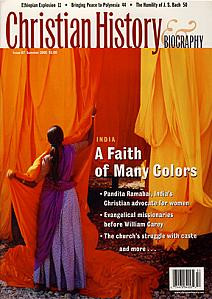HAWAIIAN CHRISTIANS CLAIMED SOULS IN THE MICRONESIAN ISLANDS

[Above: School girls on Kubate, Marshall Islands, from Ella Theodora Crosby Bliss. Micronesia: Fifty Years in the Island World. Boston: American Board of Commissioners for Foreign Missions, 1906. Public domain]
SHORTLY AFTER the arrival of missionary Titus Coan to Hawaii in 1835, revival broke out with profound consequences for distant Micronesia. By 1850, one quarter of Hawaiians were Christians. They were eager to share their faith with other islanders. They formed the Hawaiian Society of Foreign Missions to carry the gospel throughout the Pacific.
On this day, 15 July 1852, the first Hawaiian missionaries set sail for the Caroline Islands in Micronesia with a letter of greeting from King Kamehameha III of Hawaii. The message urged chiefs to receive the missionaries kindly and to renounce idols and worship the living God.
The Hawaiian worker Daniela Opunuí and his wife (whose name is unknown) settled on one of the low-lying coral islands of the Gilberts, along with B. G. Snow and his wife Lydia. The local monarch, known as Good King George, received them hospitably. However, on one day he would praise the missionaries and their teachings, and on the next he would get his people drunk. Eventually, he too yielded to the claims of Christ. Opunuí did not live to see this breakthrough, surviving less than a year after reaching the Gilbert Islands.
Another Hawaiian, Bireta Kaaikaula, in company with American missionaries Sturges and Gulick and their wives, settled on Ponape in the mountainous Carolinas. A decade later, Ponape would send forth its own missionaries.
In 1854, missionaries—including a Hawaiian, Kanoa—settled in the Marshall Islands. Their reception was better than expected, despite the fierce reputation of the islanders, because a local queen appreciated missionaries, having sailed with some. A missionary had also given life-saving medical care to another of the islanders.
Other Hawaiians worked throughout the wide-flung island chains. Despite interference from hostile sailors, and resistance from recalcitrant sinners, they planted churches and translated the Bible into local languages. Micronesians themselves became involved in missions.
In 1873, the mission ship Morning Star carried fifteen-year-old Princess Opatinia of Ponape and other Christians to the Mortluck Islands. Within five years these pioneers established seven churches, totaling three hundred and thirty-eight members.
Six natives of Pingelap, abandoned on Ponape by a trader, became Christians after a missionary arranged their housing, garden space, and education. Two returned to Pingelap as missionaries. When a pagan priest attempted to kill them through incantations, he himself collapsed. The two preachers restored him by prayer and the islanders embraced the more powerful religion.
A Gilbert Islands’ boy, whose parents had been killed on Ponape, became a Christian. When he was grown, he took the name Moses, and planted a church in the Mortluck group, gathering eighty-six members within two years. He then founded a church with fifty-seven members on another island. In 1879, he tackled Ruk, an island with ten thousand inhabitants. Within a year he had founded a growing church and Sunday school. Similar stories could be told.
Yet while work progressed in some islands, Spain drove Protestant missionaries from Ponape in the 1890s and harassed Protestant islanders who refused to convert to Catholicism.
All told, in the space of forty years, the Protestant Micronesia mission produced forty-six self-supporting churches. Out of a population estimated at eighty-four thousand, forty-three hundred were church members. Although this work was under the auspices of The American Board of Commissioners for Foreign Missions, much of the achievement was owing to the prayers and labors of Hawaiians and Micronesians.
—Dan Graves
----- ----- -----
For more details on how islanders carried the gospel to other islands in Oceania, read "Bringing Peace to Paradise" in Christian History #87, India: A Faith of Many Colors






